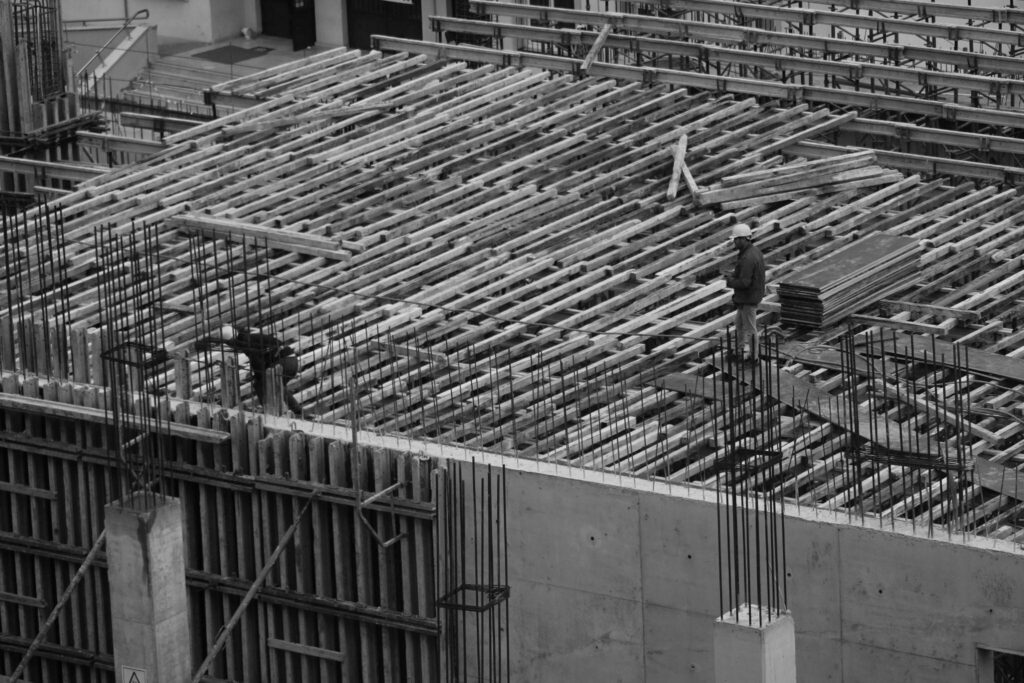
Construction leaders know that understanding construction metrics drives better decisions, enhances operations, mitigates risks, and unlocks growth prospects. However, the challenge arises when businesses grapple with an overload of information due to the lack of clarity on essential construction metrics. On top of that, incomplete or delayed data complicates assessing project outcomes, nurturing client relationships, evaluating employee engagement, and enhancing safety and productivity.
This eBook underscores the significance of monitoring key performance indicators, various metric types, and common pitfalls encountered by construction executives. Keep reading to find out which metrics to track for heightened productivity, and how to leverage actionable insights to fuel organizational growth and efficiency.
Before we jump into which metrics are important for construction leaders to understand, we should look into the differences between each metric.
Metric types
Descriptive
Descriptive analytics typically refer to trailing or historical indicators, allowing analysis of past events and data. They form the groundwork for other metric types.
Diagnostic
Diagnostic metrics aid contractors in understanding the reasons behind occurrences. They often stem from accumulated descriptive analytics, employing artificial intelligence to detect anomalies and reveal the interplay between different processes.
Predictive
Predictive KPIs utilize descriptive and diagnostic metrics to gauge the likelihood of future performance. For instance, forecasting equipment breakdowns or predicting customer bankruptcies, which could lead to increased bad debt write-offs.
Prescriptive
Prescriptive analytics amalgamate descriptive, diagnostic, and predictive construction metrics to propose preventive measures before issues arise. These analytics frequently rely on mathematical models and business regulations.
Strategic Metrics Everyone in Construction Should Consider
FINANCIAL
Net Income: A company’s profits are net income after subtracting taxes and expenses. Follow the numbers over time to get insights into your financial performance and plan future decisions around these strengths and weaknesses.
Cash Position: Collecting unpaid invoices is an ongoing challenge for construction companies. An inability to collect burdens your ability to pay subcontractors and suppliers. Manage AR and AP data to avoid project delays and see when to bid on more projects.
Bank Balance: Aggregate financial data to track trends and avoid bank fees and penalties. Connect all stakeholders to see a holistic view of the company’s health.
Project Budgets: Track budgets, payroll, invoices, and billing to see cash flow and give everyone in the field and office project budget updates. Predict industry trends and fluctuations in material prices to react with agility.
Project Win Rates: Your sales pipeline is a leading indicator of future revenue and demand. Monitor win rates to understand why you won or lost a bid.
SAFETY
Incident Rates: Data that tracks incidents, injuries, and near misses helps prevent and lower the number of future incidents. Contractors will watch for trends in the data to determine causes and preventative measures.
Lost Time: Employees and employers lose when an injury prevents someone from working. But safety violations on the job site can also derail a project timeline. Leaders track these numbers to create a safer and more productive work environment.
PROJECT PERFORMANCE
Project Revenue: Construction projects run on slim profit margins. As the inevitable RFIs, change requests, and change orders filter in during a project, the budget must be adjusted to reflect those changes.
Project Timelines: Access to KPIs gives visibility into planned and unplanned costs and changes that may impact the project’s milestones and timelines.
Worker Productivity: Compare budgeted hours with actual hours on a project after completion. Adjust future bids to prevent labor costs from cutting into the profit margin.
Compliance Metrics: In conjunction with safety metrics, this data measures how your compliance teams perform on the job site. Quantify data showing a project’s performance according to compliance standards.
Material Margins: Construction material prices are constantly in a state of flux. Leaders must leverage price decreases and react to increases to stay within budget.
QUALITY
Downtime: This measures cost and time when factors like weather, equipment malfunctions, or material shortages disrupt the work schedule.
Rework Costs: Measure the cost of redoing work due to mistakes made from not following the plans correctly or performing wrong or subpar work.
Customer Satisfaction: Gather data from customers with questions and surveys about their overall satisfaction. This includes information about quality, deadlines, and communication with the teams.
Technology for Improved Metrics Management
Defining metrics and key performance indicators is the first step, which is relatively simple. However, the challenge lies in gathering and presenting this data in a meaningful way for stakeholders. Manual handling of data and complex spreadsheet analysis are prone to errors and consume a lot of time. Therefore, contractors rely on specialized ERP applications and connected business intelligence tools to streamline data collection through automated alerts and notifications.
Modern cloud-based ERP applications, such as Acumatica, offer construction business leaders a solid foundation. These systems consolidate data from multiple sources and provide customizable inquiries, tailored reports, role-specific dashboards, and detailed data analysis. This ensures the accuracy and timeliness of the information, promoting better decision-making.
Cutting-edge cloud platforms such as Acumatica equip construction executives and departmental managers with instant insights using role-specific dashboards, live reports, and detailed inquiries. With Acumatica’s business intelligence, analytics, and automated workflows, leaders gain powerful tools to efficiently steer their business toward its goals.
If you’d like to learn more about construction metrics, download our complimentary eBook, “Construction Metrics That Really Matter” or talk to one of our experts today.
Download Now
Questions?
Related Resources


The Growing Need for Modular Construction Software
Read the Article

